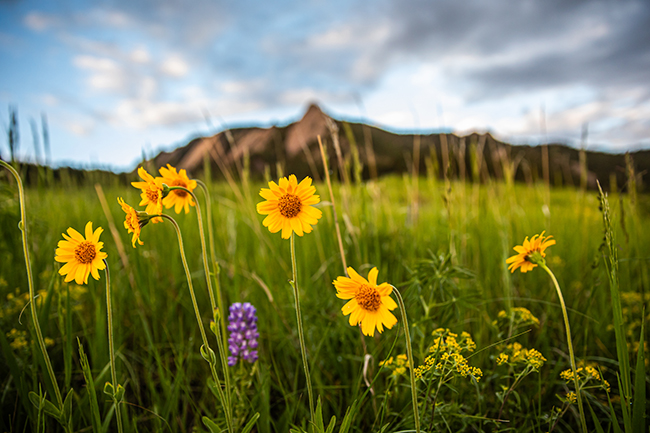Boulder's Climate Leadership
04 Apr 2024
Advancing sustainability and embracing the limitations climate change is handing us
By Grace Adele Boyle
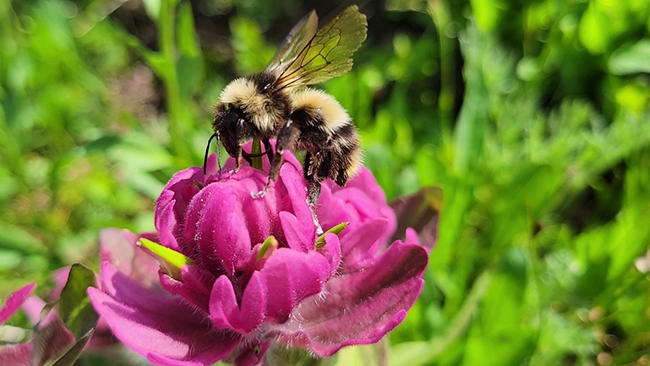
If you’re a resident of Boulder, chances are you hold a deep appreciation for the environment. Its perennial recreational opportunities, health-conscious community and natural beauty are just a few of the reasons Boulder is consistently ranked as having one of the highest qualities of life in North America. Moreover, Boulder’s local government and community commitment to environmental conservation has earned it recognition as an International Climate Leader.
However, ensuring a sustainable future requires more than recognition; it demands realigning our core values, individually and societally, and prioritizing long-term plans that put climate health at the forefront. In practice, this entails the diligent work of local environmental experts and community members committed to tackling the complexities and nuances of sustainable conservation.
The Weight of a Bumblebee
Despite prevailing opinion, honeybees are not the pollinators that need saving. The popular “Save the Bees” tagline fell prey to one of marketing’s classic failures: the words stuck but the call to action was lost. Rather, bumblebees are critically endangered, threatening the natural balance and web of biodiversity. “Half of the diversity of bumblebees in North America are in Colorado, and Boulder County has nearly all of them because we’re one of the strongest reservoirs of habitats,” shares Adrian Carper, pollinator expert and research associate at CU Boulder.
A backyard beehive is a charming environmental gesture, but honeybees are one of the most competitive nonnative pollinators and carry diseases that spread to bumblebees, a dark symmetry that echoes the impact of the European Settlers who first brought honeybees to North America.
“Bumblebees are native, but they evolved in the Himalayas, and they are high alpine specialists, so Boulder is a critically essential piece in preserving the biodiversity of the entire country,” Carper explains. “Our mountain environments are the most susceptible to climate change, and our biggest concern is the bumblebees are moving up in elevation. As the climate warms, there’s going to be nowhere else for them to go to. That’s why bumblebees are a primary target species for conservation.”
Colorado is still in the early stages of insect protection and the more people who get actively involved, the better.
How to Make a Difference
- Attend the Big Bug Day Program this June at Denver Botanical Gardens.
- Get involved with biodiversity preservation with the People and Pollinator Action Network (PPAN).
- Attend a class on mountain environmental science through the Mountain Research Station (MRS).
- Join the Xerces Society, an international nonprofit dedicated to protecting invertebrates and their habitat.
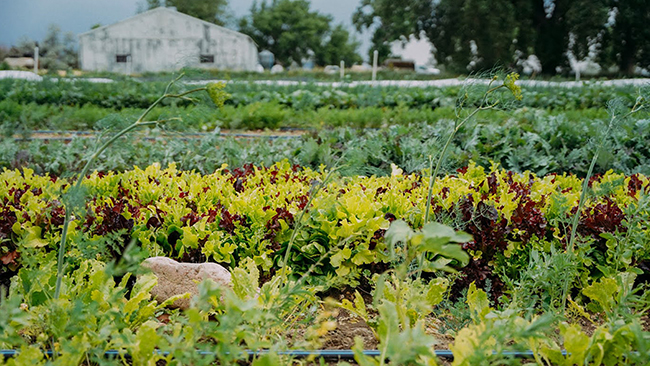
Soil Health & Regenerative Agriculture
Pollinators play a crucial role in both biodiversity and agriculture, yet the latter—particularly grazing and farming—are the driving forces behind biodiversity loss, directly threatening 86% of endangered species. The central concern is redesigning our global and local food systems to enhance sustainability, with Regenerative Agriculture emerging as the favored solution of the moment.
Regenerative Agriculture isn’t one thing, it’s a holistic approach that prioritizes soil and ecosystem health, thereby bolstering resilience against climate change-induced disasters like droughts and floods. Despite lacking a universal definition, Regenerative Agriculture is facing challenges by being co-opted into mainstream narratives and cloaked in multibillion-dollar marketing campaigns.
That said, it’s important to acknowledge that Regenerative Agriculture wasn’t created by anyone alive today but rather draws from indigenous practices predating industrial agriculture. While it offers benefits like carbon sequestration, it’s unrealistic to believe that if all farms simply switched to Regenerative Agriculture, climate change would be solved.
Furthermore, the economic realities facing farmers, particularly small-scale operations, are daunting, with razor-thin profit margins exacerbated by government subsidies favoring large mass-market farms. This imbalance distorts pricing (what’s the true cost of a banana?) and amplifies the challenges for smaller farmers striving to compete. Yet amidst this food system chaos, Boulder has continued to implement models of change.
So, how are we addressing climate stabilization across our agricultural lands cohesively?
Tim Broderick, Senior Sustainability Strategist for Boulder County’s Office of Sustainability, Climate Action and Resilience, has worked hard to help create answers to this question. “The community of Boulder County is incredible. We are leading the forefront in creating a sustainable food model, like Naturally Boulder—[a nonprofit dedicated to fostering mindful development, leadership and ingenuity within Colorado’s natural and organic products sector]— and supporting farmers and ranchers in sustainable agriculture practices through assistance and incentives,” Broderick explains.
Since 2020, Boulder’s Sustainable Food and Agriculture Fund has given $1.4M in grants to support farmers and the food system in its totality. These support a variety of measures including soil health and production, processing (farm stands and smokehouses), educational outreach (including the Flatiron Young Farmer’s Initiative) and safety equipment for frontline farm workers. The grants, available to both public and private land use, are to minimize the financial risk farmers take when implementing these practices.
“We’ve done 37 projects to date,” says Broderick, “And we are now offering $1.1M in local grants to farmers, ranchers and agricultural producers through our Boulder County Healthy Soils Initiative to implement the five soil health practices that the USDA and NRCS promotes.”
These five practices are the classics: Rotational Crops and Grazing; Cover Cropping; Conservation Tillage; Soil Nutrient Management; and Native Field Borders.
“Soil health is a great connector for all types of farmers, big and small, conventional, organic and regenerative. Everyone can do better, even the best farmer can still do a better job managing soil health, and the goal is to care for the soil so it can do better with wind and water erosion,” says Dr. Lauren Kolb, Senior Agricultural Program Manager for the City of Boulder’s Open Space and Mountain Parks department.
“There’s the academic world of sustainable agriculture and then there’s the real world––and that’s where the people are. I’ve been on a lot of farms in a lot of places and yes, you can make quick assessments on soil health and sustainability, but there’s always more nuance and context. That’s why you need humans who are interested in the interconnection and complexity of creating lasting solutions,” Dr. Kolb explains.
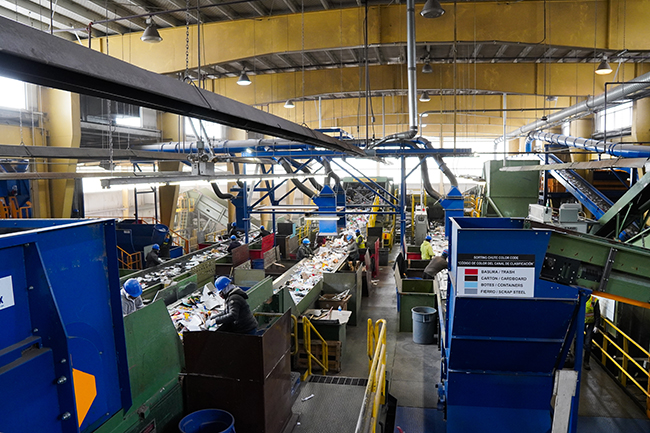
Food, Nutrition & Access
During the pandemic, Boulder received a grant from the United States Department of Agriculture (USDA) to partner with the nonprofit Zero Foodprint. Using a table-to-farm approach, Zero Foodprint enables restaurants to offset the carbon that’s associated with their food chain by adding a 1% surcharge that goes directly to farmers implementing regenerative agricultural practices.
To date, over 30 restaurants in Colorado have joined Zero Foodprint’s member directory.
But what about people just trying to put food on the table?
Boulder County’s Public Health Department has created a Nutrition Incentive Program that makes local, sustainably grown produce more accessible to low-income families. The coupons can be used at local farm stands to receive no-cost produce but also at grocery chains, so it is still up to the recipients to support local farms. One of the unmatched benefits local farms offer their community is input on what crops they grow. This reciprocal community engagement makes Boulder’s food system more resilient and sustainable.
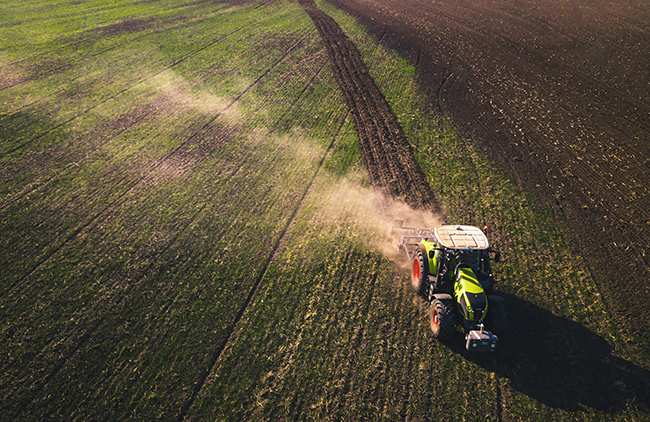
Waste: Our Common Denominator
While income determines the purchasing power of sustainable goods and services, there is one
equalizer — waste. The conservation efforts of Boulder’s waste management team start in our homes. People still practice “wish cycling”––tossing material in the recycling bin hoping it’s repurposable. “We see every single item people recycle,” says Chandra Valenza, Community Outreach Manager for Boulder County Public Works Department. Valenza encourages people to “Know Before You Throw” by learning the guidelines on what’s recyclable in your area.
However, the future of recycling is changing with the Producer Responsibility Act. Passed in 2022 and to be fully implemented by 2026, the act will make recycling guidelines consistent statewide and put the onus on manufacturers to take responsibility for the environmental effects of their products from production to disposal.
“People want black and white answers when it comes to plastics and waste, and we don’t have them. Waste is also very personal, everyone has waste, so it’s a good place to focus your conservation efforts,” Valenza says.
Reimagining The Future
The predicament we find ourselves in is this: We want our climate footprint to resemble our ancestors 11 generations ago without sacrificing our current standard of living. In the past, we’ve been willing to change our lifestyles as long as it means recycling, going vegan, switching to LEDs and getting to our ski trip in a Prius. Even the concept of an individualized “carbon footprint” is complicated, originating from campaigns deflecting responsibility from corporations and back on citizens.
What if the changes required means:
- Living in dense, transit-oriented communities instead of dual-vehicle, single-family lots.
- Eating low-processed, plant-based, local produce (goodbye beef, avocados and coffee).
- Adjusting our power usage around peak hours for wind and solar energy to support a decarbonized energy economy.
- Reusing more, consuming less and living with fewer luxuries, comforts and options.
The paralyzing crux of climate change, especially for affluent communities such as Boulder, is that whether we choose sustainable living or the ostrich-like denial of “business as usual,” our lifestyles and choices from here on out are going to look different and will be increasingly limited over the next 30 years. We don’t want to accept that the future we imagined for ourselves and those we love is no longer possible.
But what if the future we create together can be better?
Complexity & Radical Hope
The future we create together will necessitate centering what ecologist and philosopher David Abram calls “the more than human world,” and the Cool Boulder Initiative is organizing “collaborative, nature-based climate action” that does exactly that. “Our three main action areas are Pollinator Pathways, Connected Canopies, and Absorbant Landscapes,” explains Caroline Petterson, CivicSpark AmeriCorps Fellow.
“Something I love about the work we do is that it’s very accessible to people and inspires hope. Being prepared for climate change is a form of community building, and we give people concrete actions they can take to make their families and community more resilient and hopeful,” says Heather Bearnes-Loza, Sustainability Senior Program Manager for Cool Boulder. With over 40 community partners who collaborate and coordinate local conservation efforts, Cool Boulder facilitates the cross-pollination of resources and ideas, strengthening the community and better preparing the region for a sustainable future.
Boulder’s journey towards sustainability reflects a broader shift in environmental consciousness. By embracing bold initiatives and fostering community collaboration, Boulder is creating a path for a more resilient and sustainable future.
“This type of change takes creative thought. It takes people who are engaged and paying attention to what that whole system is telling us,” explains Lauren Kelso Site Director at Growing Gardens of Boulder County. “We’re looking to rebuild systems, not just leave this area better than we found it, while continuing to take what we can. We aren’t going to be able to simplify it, it’s going to stay complex if we’re going to keep doing it right.”

